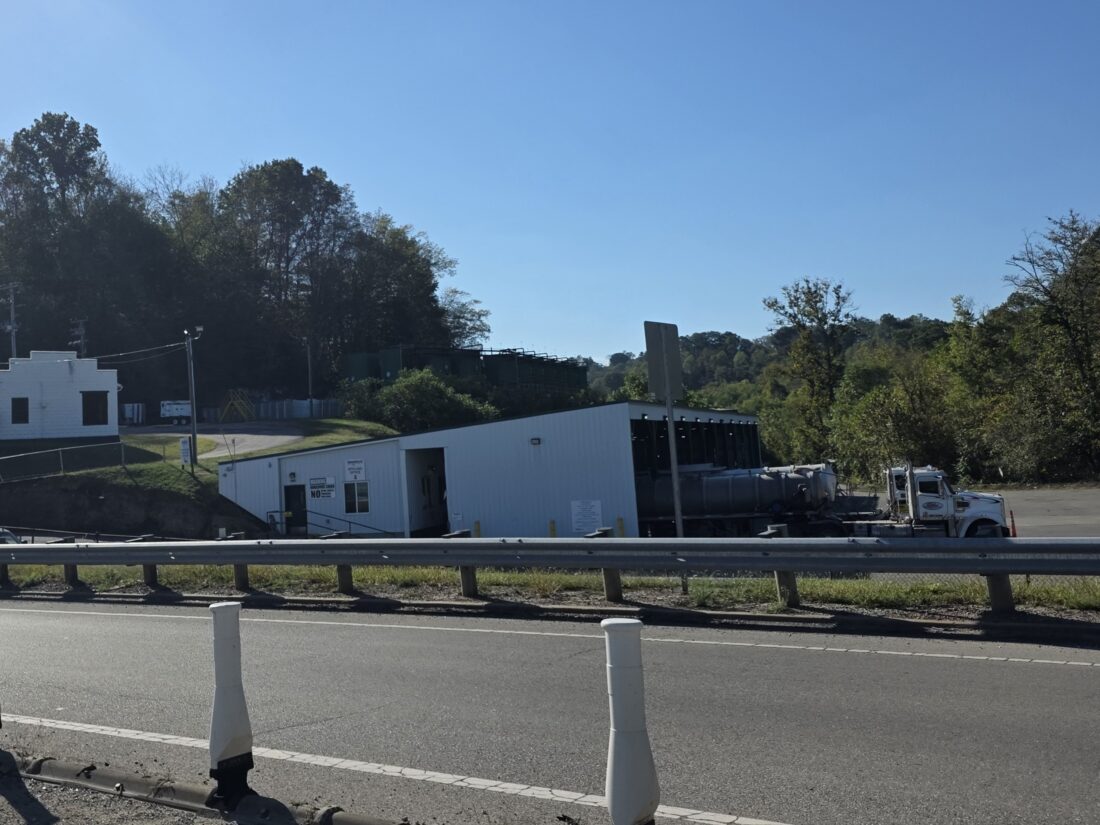City officials continue to work on injection well proposals

One of the DeepRock Disposal Solution injection well sites sits just outside of Marietta on Ohio 7. (Photo by Douglass Huxley)
Marietta City Council is set to continue debate tonight on two measures aimed at responding to the Ohio Department of Natural Resources’ approval of a Class II injection well within two miles of the city’s well field.
The proposals – Resolution 79, creating an ad hoc Injection Well Task Force, and Resolution 80, authorizing legal action – have been the focus of weeks of discussion over how quickly the city should act in challenging the Aug. 28 permit issued to DeepRock Disposal Solutions for a Class II injection well.
The city of Marietta submitted its objection and comment letter on Aug. 8, signed by nine elected officials, according to Council President Susan Vessels. She told council that despite the filing, the ODNR issued the permit on Aug. 28, without granting the requested public hearing.
Resolution 79 would form a committee of up to seven members under the Water, Sewer & Sanitation Committee to review geology, permitting and potential impacts to the city’s aquifer and report findings back to council. A key sticking point has been section 4 of Resolution 79, which states, “the Council of the City of Marietta shall then review the information and decide whether the City of Marietta should file a mandamus action challenging the Ohio Department of Natural Resources Oil and Gas Division issuance of Class II injection well permit to Deep Rock Disposal Solutions for the proposed Stevens No. 1 injection well.”
Resolution 80 would authorize Law Director Paul Bertram to prosecute or defend litigation on the city’s behalf, indicating a potential mandamus action requiring ODNR to apply newer injection well rules that reduce daily disposal volumes.
At a recent meeting, Bertram stated that the ordinance affirms his office’s authority while allowing the use of outside counsel if necessary.
The interpretation of section 4 has sparked debate among council.
“If gathering information were (Councilman Ben Rutherford’s) true purpose, he would not have included Section 4,” Vessels wrote in an email read into the record at a recent special meeting.
Councilman Bret Allphin, at a recent Water, Sewer & Sanitation meeting, suggested that the language in section 4 of Resolution 79 could be amended to be broad so there is a clear distinction that both Resolution 79 and 80 could operate independently from each other.
“Can we phrase it in a way that supports our overall effort to protect ourselves from the impacts of injection wells and at the same time, simultaneously be informed about impact – could it be worded more broadly?” said Allphin.
During the meeting, council agreed to amend the language in Resolution 79 and present those amendments before tonight’s meeting. The proposed legislation is set to return for further readings at 7:30 p.m. today in the Armory.
Need to know terms:
Brine
¯ Brine is salt water that comes to the surface during oil and natural gas production. It often contains dissolved solids, metals and naturally occurring radioactive materials. Because it cannot be reused safely, it is typically disposed of through underground injection. (Source: U.S. Environmental Protection Agency)
Class II Injection Wells
¯ Class II wells are federally regulated under the Safe Drinking Water Act and are used only for fluids associated with oil and gas production. They dispose of brine and other liquid waste by injecting it deep underground into porous rock formations, sealed off from groundwater by layers of rock and casing. More than 180,000 Class II wells operate nationwide. (Sources: U.S. EPA, Ohio Environmental Protection Agency)
Class I Injection Wells
¯ Class I wells are used for non-hazardous and hazardous industrial and municipal waste. They inject waste thousands of feet below drinking water aquifers into isolated rock formations. These wells are subject to stricter siting, construction, monitoring and testing requirements than Class II wells. (Sources: U.S. EPA, Ohio EPA)

